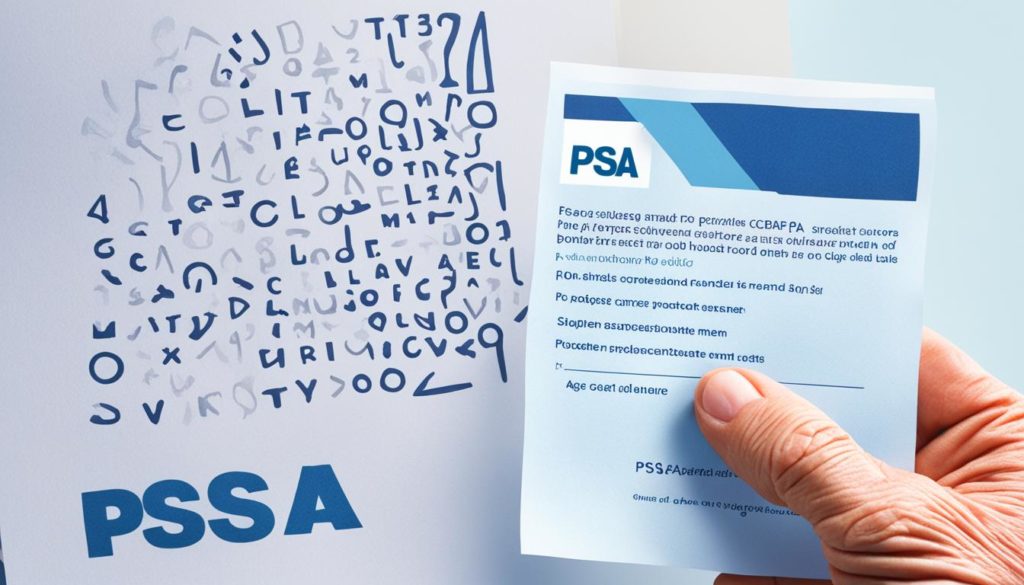About 1 in 8 men will face a prostate cancer diagnosis in their life. This fact shows how critical it is to take early steps for prostate cancer prevention. While we can’t change things like age, genetics, and race, being aware and making lifestyle and health changes can make a big difference. These actions help lessen the risk and enhance health outcomes for men.
To fight prostate cancer, we need a plan that addresses risks we can’t control and those we can, such as our diet and exercise habits. While completely preventing the disease may not be possible, smart health choices and early screenings are key. They help lower the risk and detect the disease early. By spreading the word about prostate cancer, we help men get ready to take important steps for their health.
Key Takeaways
- Approximately 1 in 8 men will be diagnosed with prostate cancer in their lifetime.
- Awareness of uncontrollable risk factors like age, genetics, and race is crucial.
- Lifestyle changes, such as diet and exercise, can significantly reduce risk.
- Regular screenings are vital for early diagnosis and treatment.
- Promoting prostate cancer awareness can contribute to better men’s health outcomes.
Understanding Prostate Cancer Risk Factors
Prostate cancer is very common among men in the United States. Knowing its risk factors helps with prevention and early detection. Risk factors include things we can’t change and lifestyle choices we can control.

Things You Can’t Change
Some risk factors for prostate cancer are out of our control. This includes getting older, being African American, and family genetics. Men over 50 are at higher risk, and it goes up with age. African American men are more likely to get prostate cancer.
Having a family member with prostate cancer also increases your risk. This is especially true for a father or brother. It shows how important genetics are.
Things You Can Change
There are ways to lower your risk of prostate cancer, though. Making healthy lifestyle choices is key. Eating lots of fruits, vegetables, and healthy fats is good. Try to avoid a diet high in fats and animal proteins.
Staying active and keeping a healthy weight matter too. Exercise is great for overall health and can help lower prostate cancer risks. It makes your body stronger against the disease.
The Importance of Early Detection
Finding Prostate Cancer early is key to successful treatment and better outcomes. Regular PSA Screening helps doctors spot the disease early. This means they can start treatment sooner.

Why Early Detection Matters
Catching prostate cancer early greatly improves the chances of beating it. PSA Screening helps find cancer early, before it spreads. This makes treatment easier and less harsh. Early detection leads to shorter, more effective treatments.
Impact on Survival Rates
Early detection of Prostate Cancer means higher survival rates. Since regular screening started in the early 1990s, deaths from prostate cancer have dropped. Much of this success comes from PSA Screening, showing its vital role in improving prostate health.
Lifestyle Changes to Lower Prostate Cancer Risk
Making lifestyle changes to prevent Prostate Cancer is key. They form a whole plan to reduce risks. These steps are meaningful, doable, and often easy for many people.
Dietary Modifications
Eating right is crucial for Prostate health. Aim to eat less saturated fat and more fruits, vegetables, and omega-3 rich foods. This can lessen inflammation and boost prostate health. Important foods to eat include:
- Fruits and vegetables
- Whole grains
- Lean proteins
- Foods high in omega-3s such as fish and flaxseeds
Exercise and Physical Activity
Regular exercise is beneficial. It lowers inflammation and strengthens the immune system. Recommended activities include walking fast, swimming, and lifting weights. The American Cancer Society suggests 150 minutes of moderate exercise every week.
Maintaining a Healthy Weight
Keeping a healthy weight is crucial for preventing Prostate Cancer. Being overweight increases your risk. A healthy diet and regular exercise help keep weight in check, reducing your cancer risk. Also, consider:
- Avoiding smoking
- Limiting alcohol intake
- Getting enough vitamin D from the sun or supplements
The table below shows the main lifestyle changes for Prostate Cancer prevention:
| Aspect | Recommendation |
|---|---|
| Diet | Eat more fruits, vegetables, whole grains; eat less saturated fats; choose omega-3 rich foods |
| Exercise | Do 150 minutes of exercise at a moderate pace every week |
| Weight Management | Balance diet and exercise; avoid smoking and too much alcohol; get enough vitamin D |
By adopting these lifestyle changes, you can greatly reduce your prostate cancer risk and improve your health overall.
Screening Guidelines by Age Group
Prostate Cancer screening guidelines are essential in deciding when men should get checked. Knowing the right time for Prostate Cancer prevention based on age can make a big difference in screening success.
Men Aged 40-54
For men aged 40-54, especially those at average risk, regular screenings aren’t usually needed. But, men with a family history or high-risk factors should think about starting early screenings after talking with their doctor. This careful planning means potential issues can be caught early.
Men Aged 55-69
Men who are 55 to 69 years old should think more about getting screened for Prostate Cancer. It’s important to talk with a doctor about the good and bad sides of screening. With up-to-date Prostate Cancer screening guidelines, making smart choices helps find and treat issues sooner.
Men Aged 70 and Older
Screening advice for men over 70 depends on each person’s health. Generally, routine checks are not suggested for them. But, men in great health might still find screenings useful. Talking with doctors can customize screening plans, highlighting age-wise Prostate Cancer prevention’s role.
Essential Prostate Cancer Screening Prevention
Being proactive in Prostate Cancer Prevention is crucial for men’s health. It’s key to have regular and detailed men’s health screenings.
Firstly, men need to know their risk factors. They should have screenings often. They also need to talk with doctors about their health and how often to get checked. These talks should help create a plan that fits their health needs.
Getting screened early and on time is vital. Doctors say you should follow the screening plan set for you. This plan takes into account your own and your family’s health history. A good screening helps lower risks and keeps you healthy for longer.
Knowing the latest in men’s health screenings is also important. New research and procedures can lead to better prevention of Prostate Cancer. These advances help improve how we prevent this disease.
To fight Prostate Cancer well, a strong plan is needed. This includes getting checked regularly and knowing your health risks. Doing this greatly helps in preventing Prostate Cancer.
Role of PSA and Digital Rectal Exam (DRE)
Two key tools help catch prostate cancer early: the PSA test and the DRE. They spot issues before symptoms show. This boosts the odds of successful treatment.
PSA Test Overview
The PSA test checks for a specific protein in the blood. High PSA levels might signal prostate cancer. Yet, they could also mean benign problems like prostatitis or a big prostate. By checking PSA levels, doctors can decide if more tests are needed. This makes the PSA test vital for spotting prostate cancer early.
Digital Rectal Exam (DRE) Explained
A doctor uses the DRE to feel the prostate through the rectum. It can be a bit uncomfortable. But, it’s key for finding prostate cancer, giving a direct check for oddities in size, shape, or texture.
The PSA test and DRE work together in early detection. Using both increases the chances of catching prostate cancer early. This way, if there’s a problem, it can be addressed quickly.
| Screening Tool | Purpose | Benefits |
|---|---|---|
| PSA Test | Measures PSA levels in blood | Early detection of prostate issues |
| DRE | Physical examination of the prostate | Identifies physical abnormalities |
Potential Risks and Benefits of Screening
Making the right health decisions requires understanding the risks and benefits of prostate cancer screening. Men must consider the Prostate Cancer screening benefits versus the risks of PSA screening. This helps ensure they make the best choices for their health.
Benefits of Screening
Screening can save lives by catching cancer early. One major benefit is lower death rates from catching cancer early on. This means less harsh treatments and better chances of surviving.
Finding cancer early also lets doctors deal with complications before they get worse.
Risks of Overdiagnosis
But, it’s crucial to be aware of the risks of PSA screening. Overdiagnosis is a big problem. Some men may get treated for cancers that wouldn’t have affected them. These treatments can cause problems like incontinence and erectile dysfunction, hurting their life quality.
| Screening Advantages | Potential Drawbacks |
|---|---|
| Early detection of cancer | Risk of overdiagnosis |
| Improved survival rates | Unnecessary treatments |
| Identification of aggressive cancers | Possible side effects (incontinence, erectile dysfunction) |
It’s important to talk with a healthcare provider about the Prostate Cancer screening benefits and the risks of PSA screening. This talk is especially key for younger, healthier men. They stand to gain the most from finding cancer early.
Dietary Recommendations for Prostate Health
Eating a balanced and healthy diet is key for keeping your prostate in good shape. It’s important to eat certain foods that help the prostate and stay away from others that can hurt it. This way, you can help prevent prostate cancer by what you eat.
Foods to Include
To support your prostate, fill your plate with fruits, veggies, and foods rich in omega-3s. Tomatoes are great because they’re packed with lycopene, a substance that’s very good for the prostate. Another good choice is broccoli, which helps your cells stay healthy. Here are some top picks for a prostate-friendly diet:
- Tomatoes: Lycopene in tomatoes is a strong antioxidant.
- Broccoli: Has sulforaphane, good for cellular health.
- Fish: A great source of omega-3 fatty acids.
- Berries: Full of antioxidants.
- Nuts: Provide selenium and vitamin E.
Foods to Avoid
Certain foods might harm your prostate health, so it’s best to eat less of them. Try to cut back on red meats, high-fat dairy products, and overly cooked meats. Here’s a short list of foods to steer clear of for a healthier prostate:
| Food | Reason to Avoid |
|---|---|
| Red Meats | They’re high in saturated fats and could raise cancer risk. |
| High-Fat Dairy | These have too much fat, which might help cancer grow. |
| Charred Meats | Can have cancer-causing compounds from cooking. |
The Impact of Supplements and Vitamins
Research continues on how supplements and vitamins might improve prostate health. Vitamin D is often a key focus. Many believe it helps the prostate by boosting immune response and lowering inflammation.
Dietary supplements also show potential for prostate health. Learning about the benefits of dietary supplements for Prostate Cancer helps people make better choices. For example, omega-3 fatty acids in fish oil may reduce inflammation. They also support heart health, which could help the prostate.
To see the possible benefits, here’s a look at some important supplements:
| Supplement | Potential Benefits |
|---|---|
| Vitamin D | Supports immune function, reduces inflammation, potentially improves prostate health |
| Omega-3 Fatty Acids | Anti-inflammatory properties, promotes cardiovascular health |
| Saw Palmetto | May reduce urinary symptoms of benign prostatic hyperplasia (BPH) |
| Selenium | Potential antioxidant benefits, although mixed evidence on its effectiveness for prostate cancer prevention |
Adding these nutrients to a balanced diet, or as supplements, can help keep the prostate healthy. Yet, talking to a healthcare provider is key. They ensure your supplement plan is safe and fits your health needs.
Medications for Prostate Cancer Prevention
Preventing prostate cancer includes several approaches. Using medications is one key method. These include DHT inhibitors, which are effective in reducing cancer risk.
DHT-Lowering Drugs
Drugs like finasteride and dutasteride lower DHT levels. This can reduce prostate cancer risk by about 25 percent. But, there’s a catch. If cancer appears, it might be a more aggressive type.
Potential Side Effects
Despite their benefits, these drugs have drawbacks. Issues like loss of sex drive, problems with erections, and breast tenderness can occur. Plus, hormone therapy should be discussed with a doctor to understand its pros and cons.
Talking to a doctor about using DHT inhibitors is necessary. New treatments are being studied in clinical trials. These efforts aim to find the best way to prevent prostate cancer while keeping life quality high.
| Medication | Benefit | Potential Side Effects |
|---|---|---|
| Finasteride | Reduces risk of prostate cancer by 25% | Decreased libido, erectile dysfunction |
| Dutasteride | Reduces risk of prostate cancer by 25% | Breast tenderness, erectile dysfunction |
It’s vital to understand how medications can help prevent prostate cancer. Working with healthcare providers helps people choose the best risk reduction strategies while maintaining good health.
Conclusion
Screening for prostate cancer is key to improving men’s health. Knowing which risk factors you can change is vital. This includes diet and exercise. It’s also important to detect it early with PSA tests and Digital Rectal Exams. These tools greatly boost survival rates.
Making changes in your lifestyle, like eating better and staying active, is beneficial. Men should get screened as advised for their age to catch cancer early. It’s also vital to talk with doctors to keep up with new prevention tips.
Research is always advancing in prostate cancer prevention. Staying informed and active in your health is crucial. With medical advice, lifestyle changes, and regular check-ups, men can greatly improve their odds against prostate cancer. They can also enhance their overall health.
FAQ
What are some essential prostate cancer screening prevention tips?
To prevent prostate cancer, get regular screenings. Eat lots of fruits and vegetables. Keep your weight healthy. Don’t smoke and drink alcohol in moderation. Exercise regularly.
What are the primary risk factors for prostate cancer?
Risk factors include age, genetics, and being African American. Diet and lifestyle also play a part. Healthy habits can lower your risk.
How do diet and lifestyle choices affect prostate cancer risk?
Eating lots of fat and animal protein can raise your risk. A diet full of fruits, veggies, and omega-3s helps protect you. Exercising and staying at a healthy weight are also important.
Why is early detection important in prostate cancer?
Early detection is key. It leads to better treatment and survival rates. Early action can greatly lower death rates from prostate cancer.
What are the benefits of early prostate cancer screening?
Early screening finds cancer sooner. This can lower death rates. It also makes treatment more successful.
Which lifestyle changes can lower the risk of developing prostate cancer?
Eat well and stay active. Keep your weight healthy. Don’t smoke or drink too much alcohol. Make sure you get enough vitamin D. These can reduce your risk.
What are the prostate cancer screening guidelines by age group?
Men under 40 usually don’t need screenings. Those 40-54 with average risk don’t either. But men 55-69 should think about it. If you’re over 70 and healthy, talk to your doctor. But it’s not usually suggested for this group.
What is the role of PSA and Digital Rectal Exam (DRE) in prostate cancer detection?
The PSA test checks blood for specific levels. The DRE checks the prostate’s health. Both are important for finding cancer early. The PSA is very helpful for early detection.
What are the potential risks and benefits of prostate cancer screening?
Screening can catch cancer early, saving lives. But, it can also find slow-growing cancers that may not need treatment. Talk with your doctor to understand what’s best for you.
What dietary recommendations support prostate health?
Eat more fruits, veggies, and foods with omega-3. Cut down on fats, dairy, red meat, and burnt meat. This diet is good for your prostate.
How can supplements and vitamins impact prostate cancer prevention?
Vitamin D and omega-3s might help your prostate. But it’s best to eat healthy foods and take supplements as needed. Talk to your doctor first.
Can medications help in preventing prostate cancer?
Drugs like finasteride may lower your cancer risk by 25%. But they can have risks, like more aggressive cancer types. Always discuss them with a doctor.


